StemUp: OCR A A level Physics 4.2: Energy, power and resistance
1/53
There's no tags or description
Looks like no tags are added yet.
Name | Mastery | Learn | Test | Matching | Spaced |
|---|
No study sessions yet.
54 Terms
What is the symbol for an open switch? (1)
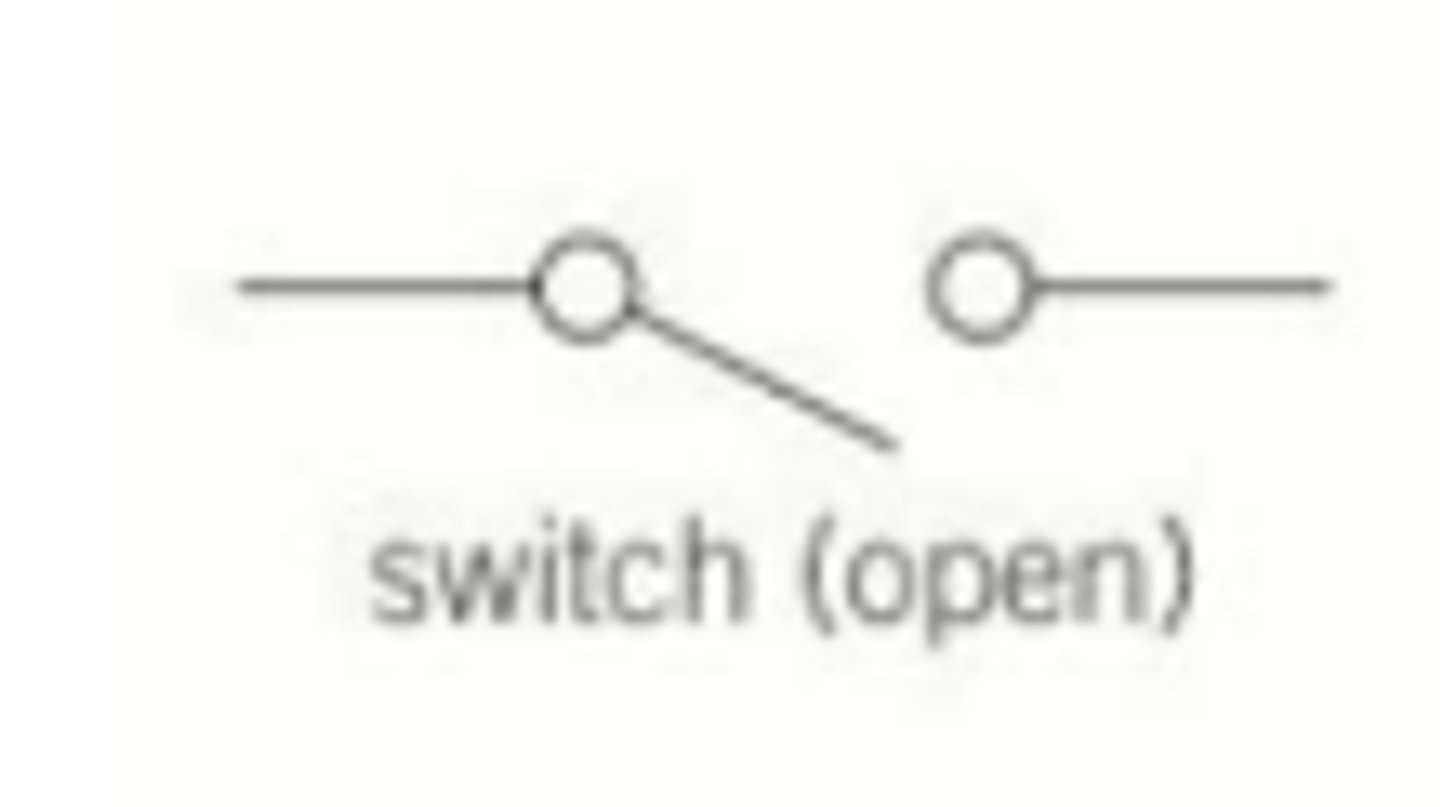
What is the symbol for a closed switch? (1)
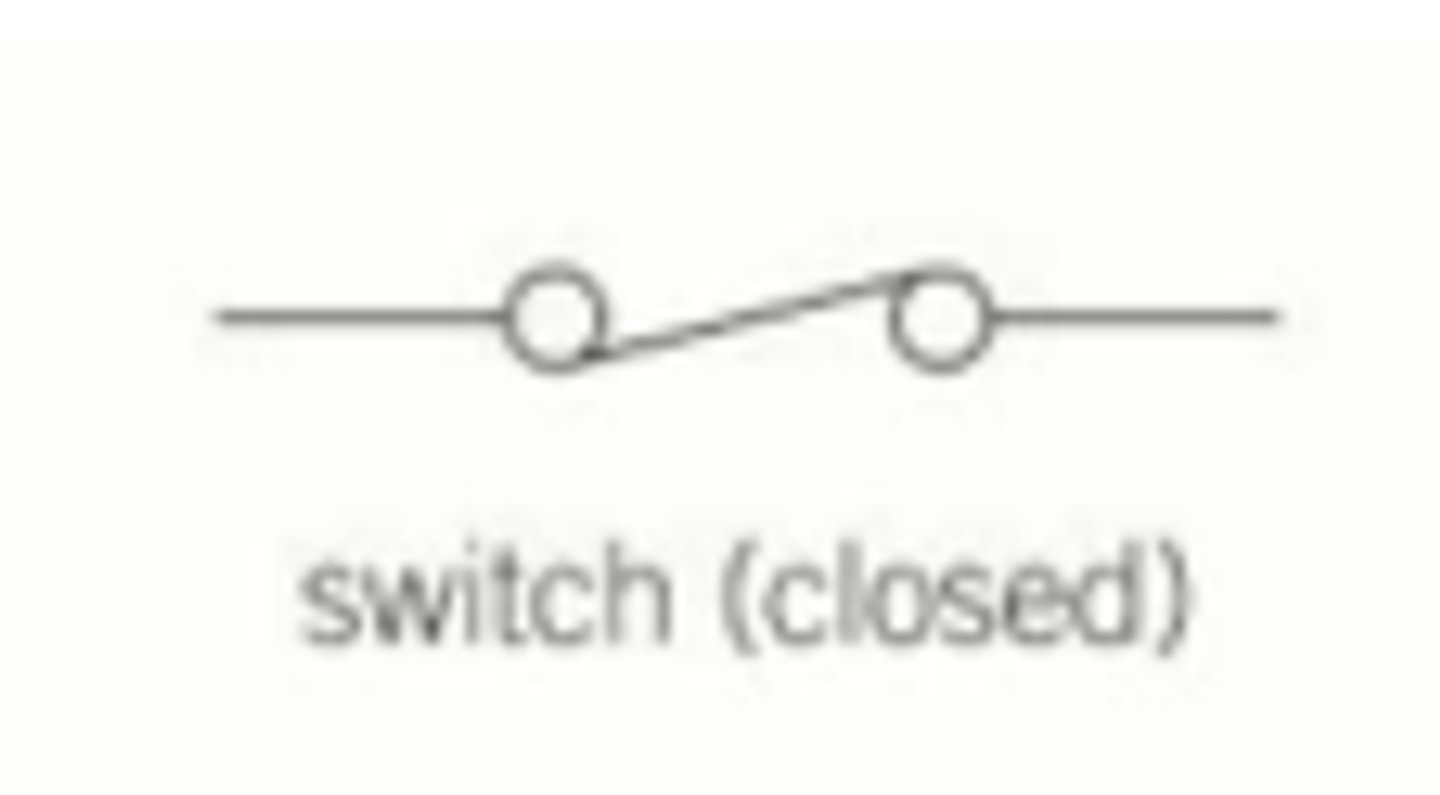
What is the symbol for a cell? (1)
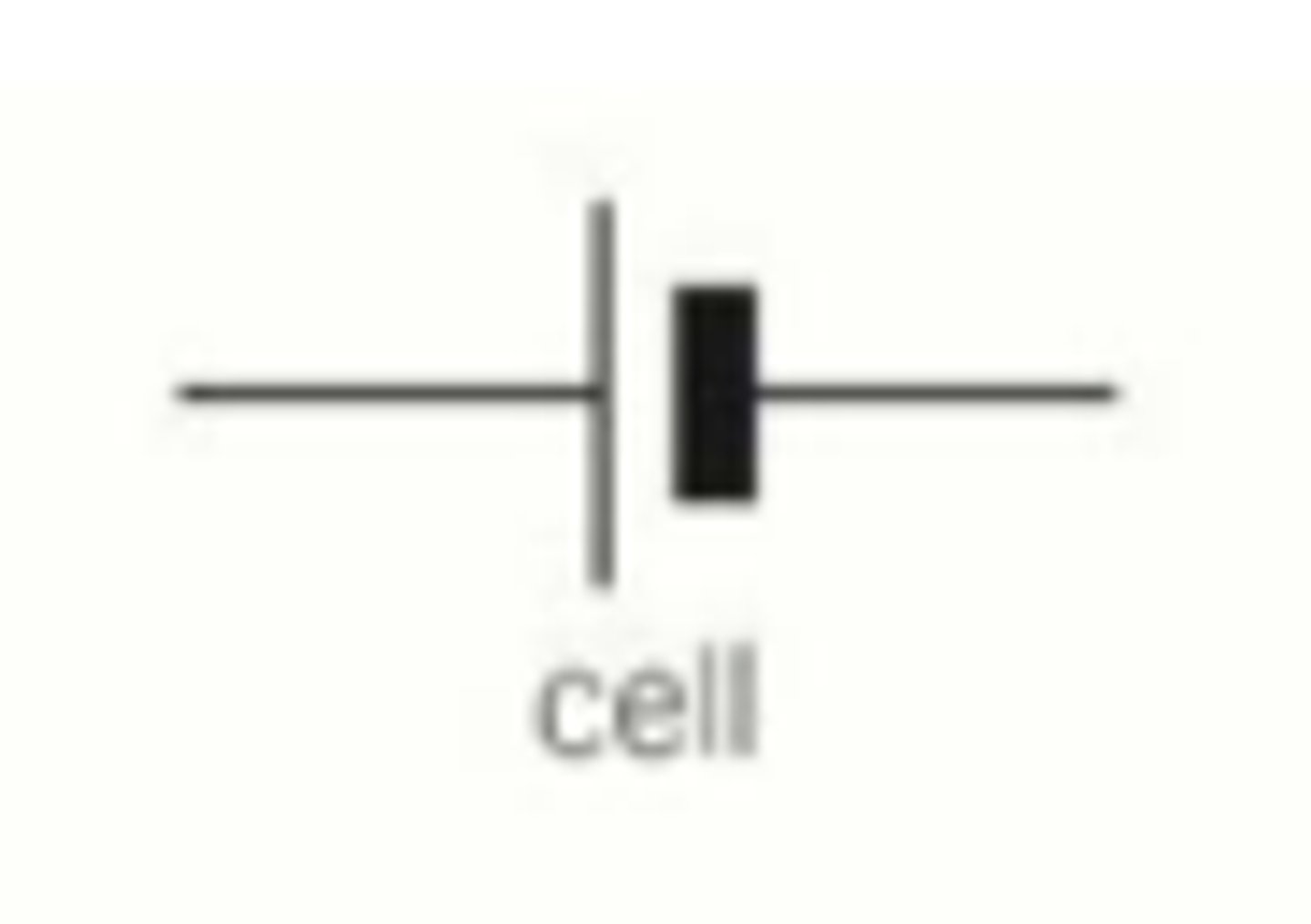
What is the symbol for an ammeter? (1)
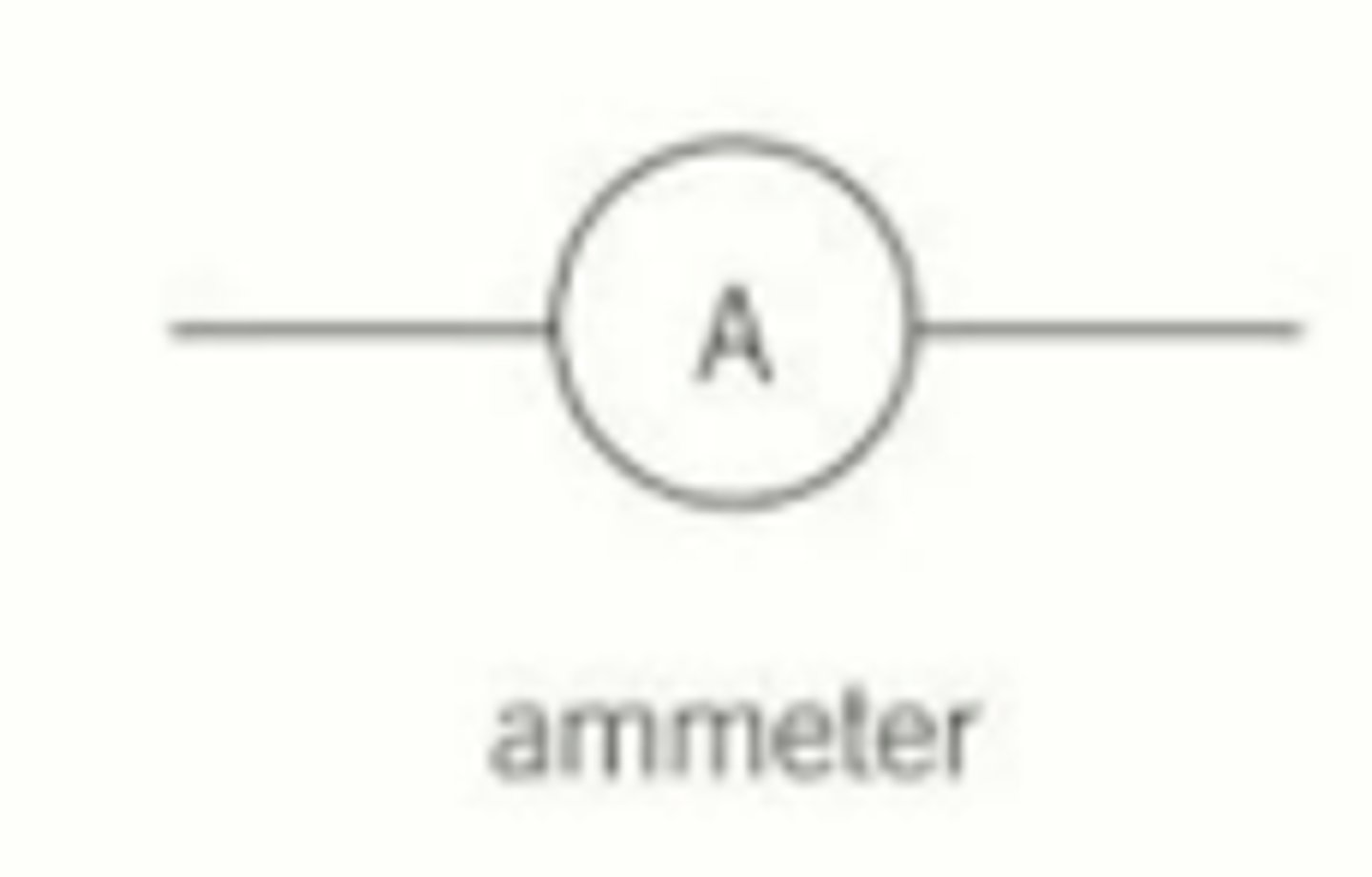
What is the symbol for a voltmeter? (1)
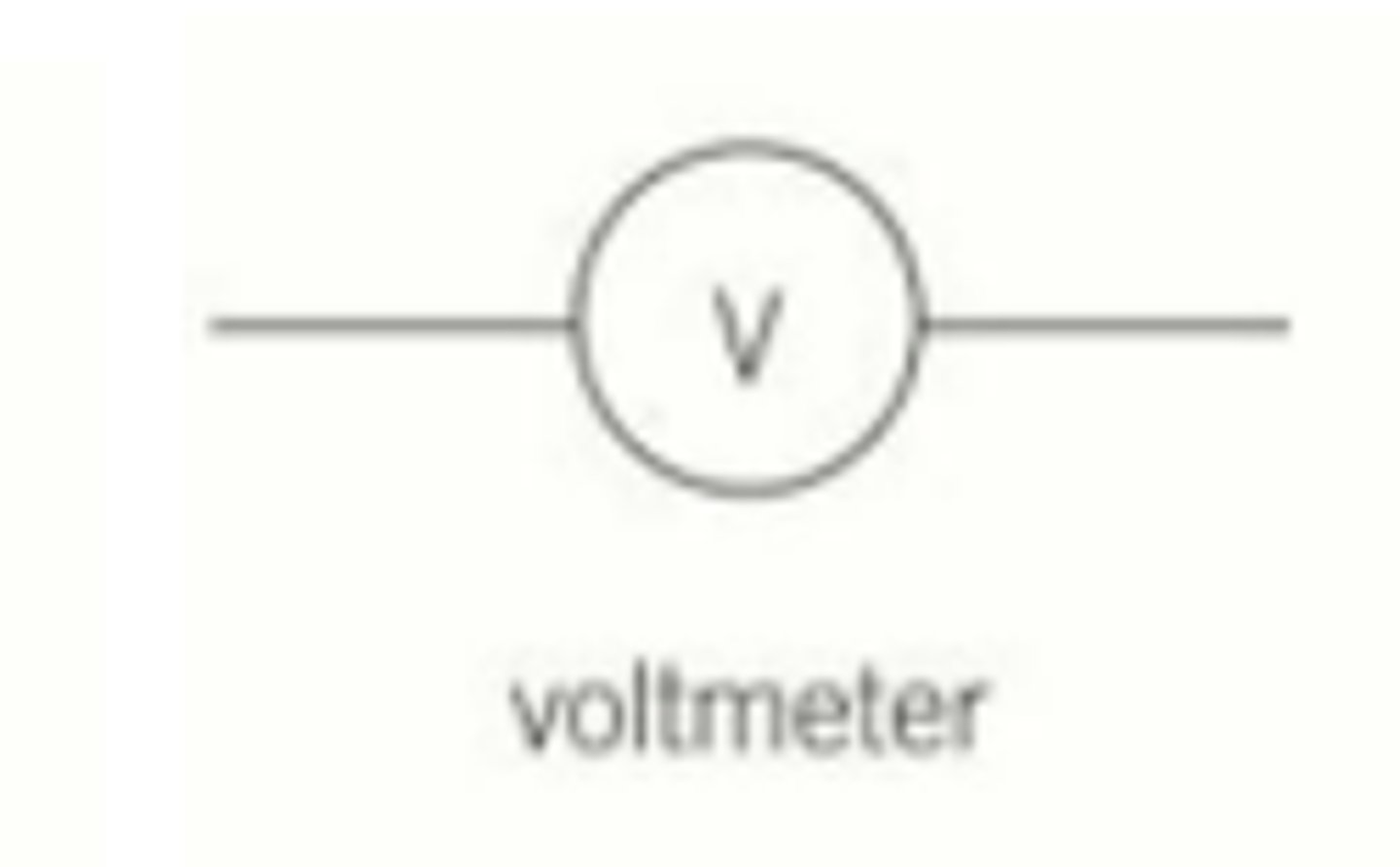
What is the symbol for a resistor? (1)
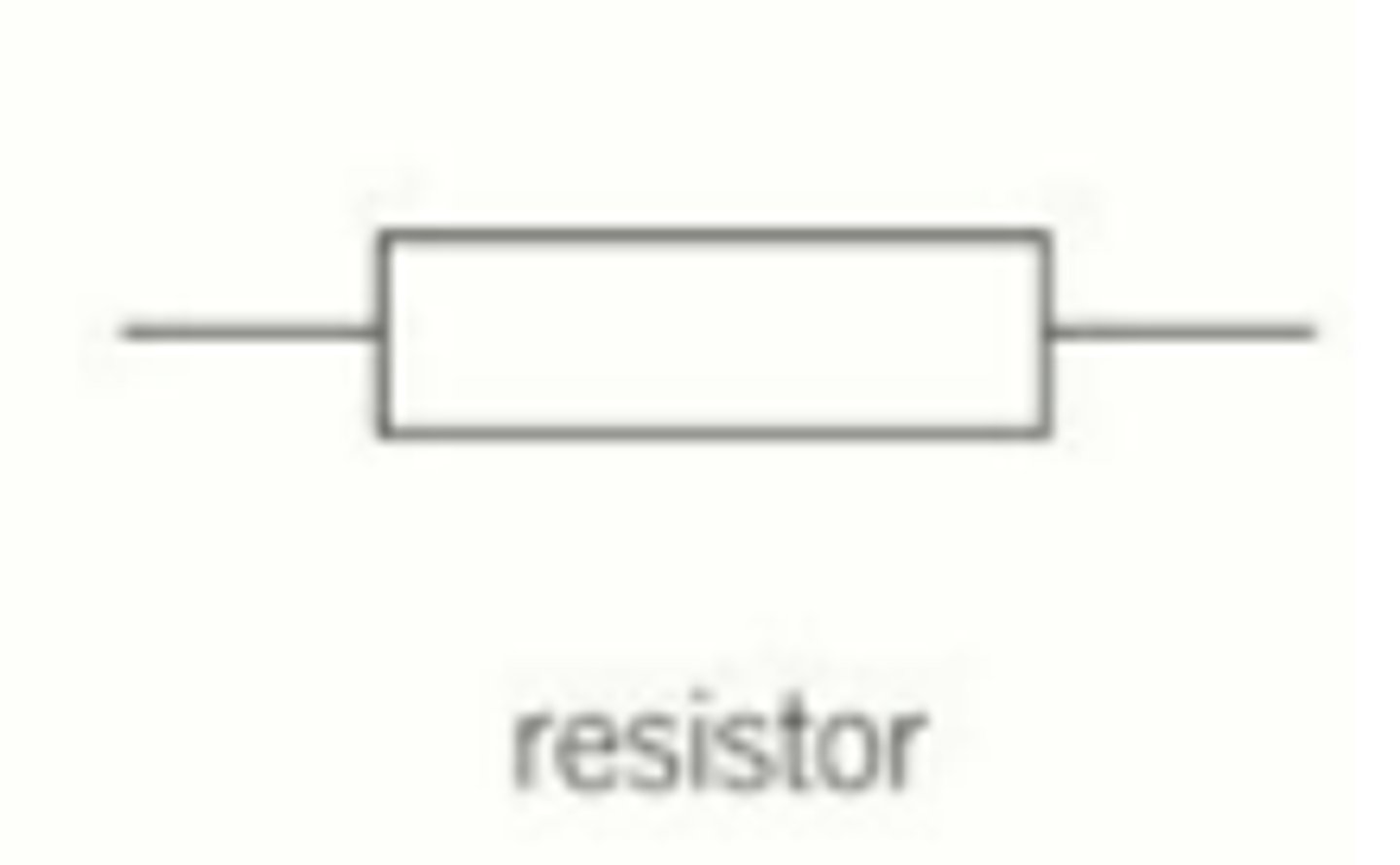
What is the symbol for a variable resistor? (1)
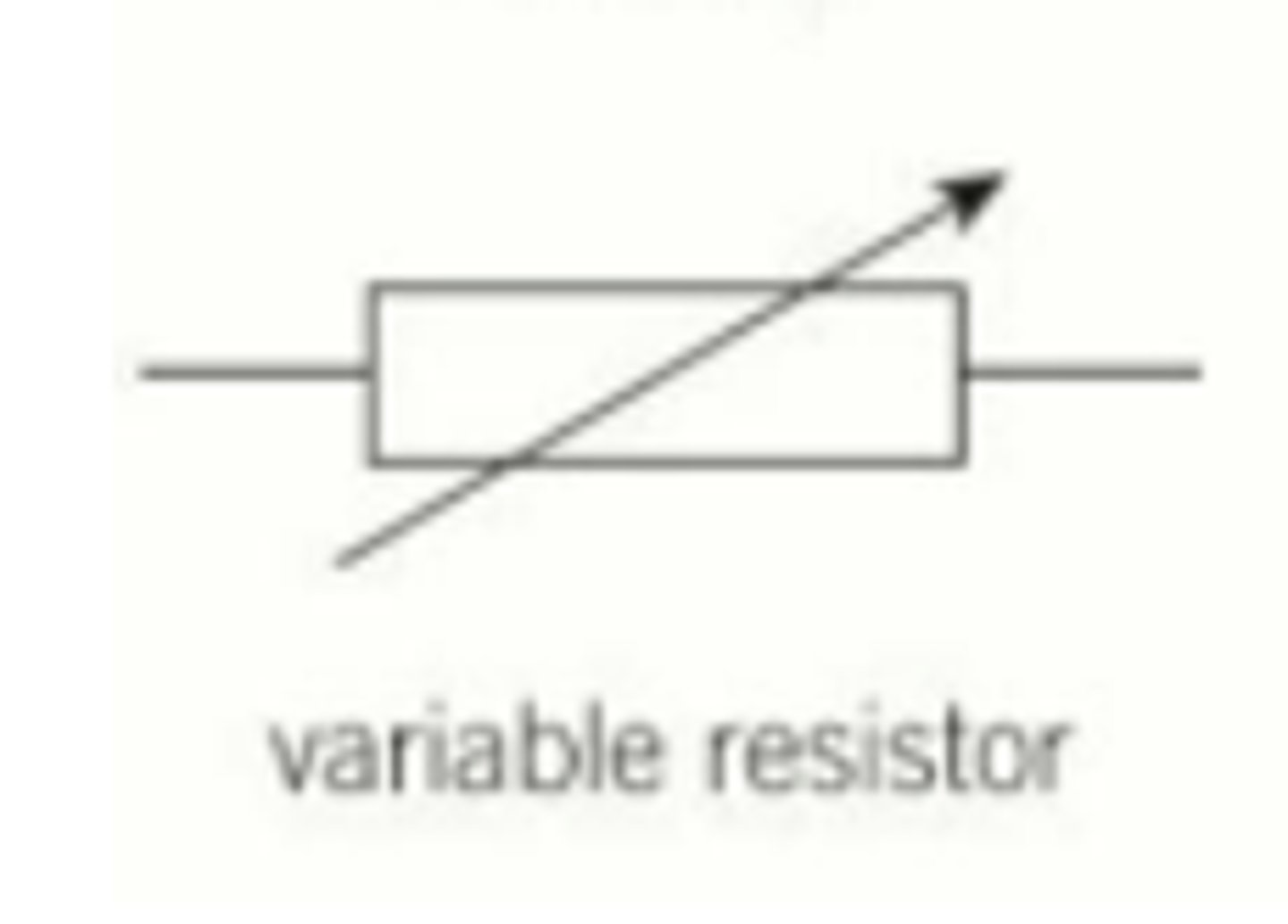
What is the symbol for a thermistor? (1)
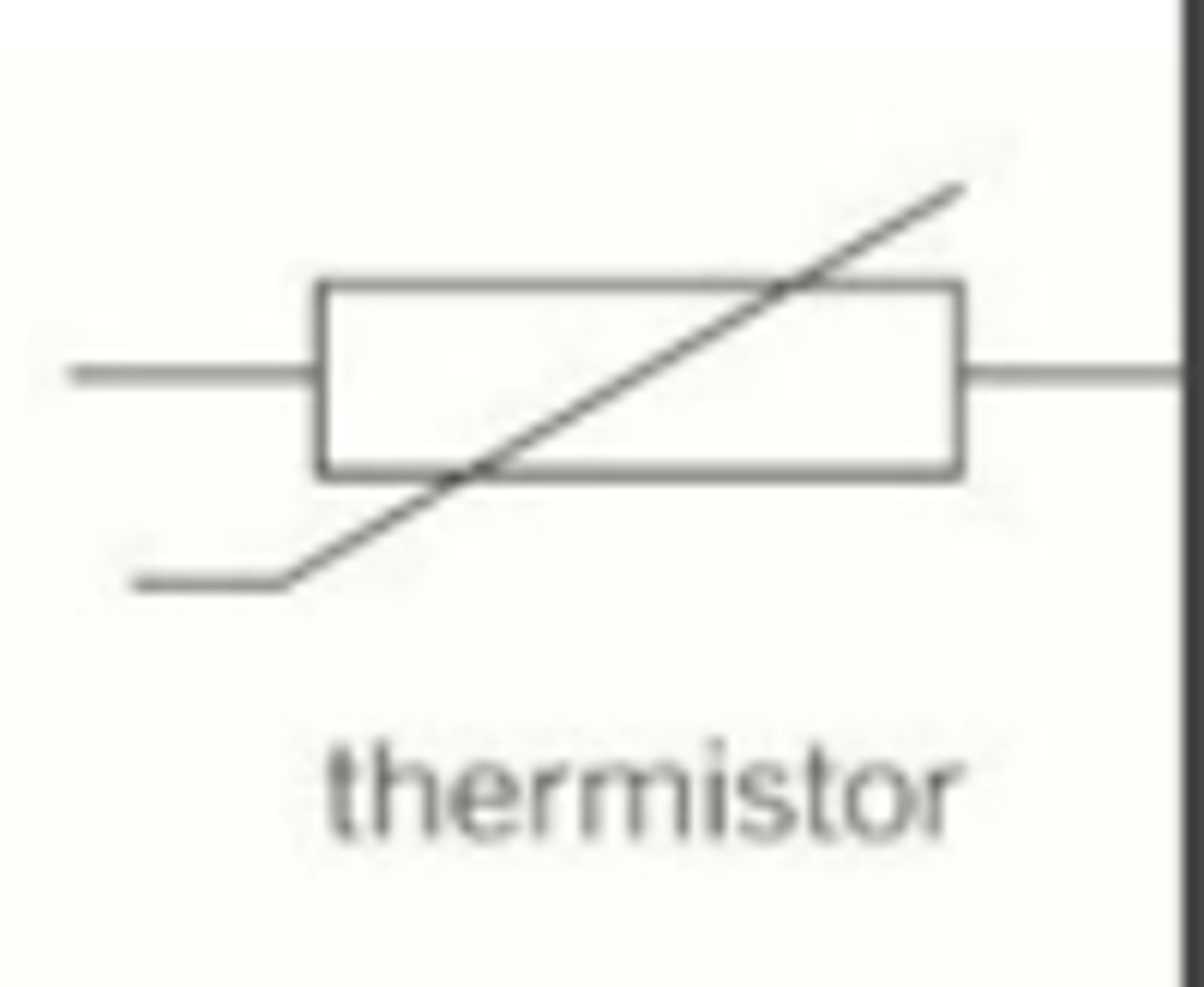
What is the symbol for a LED (light emitting diode)? (1)
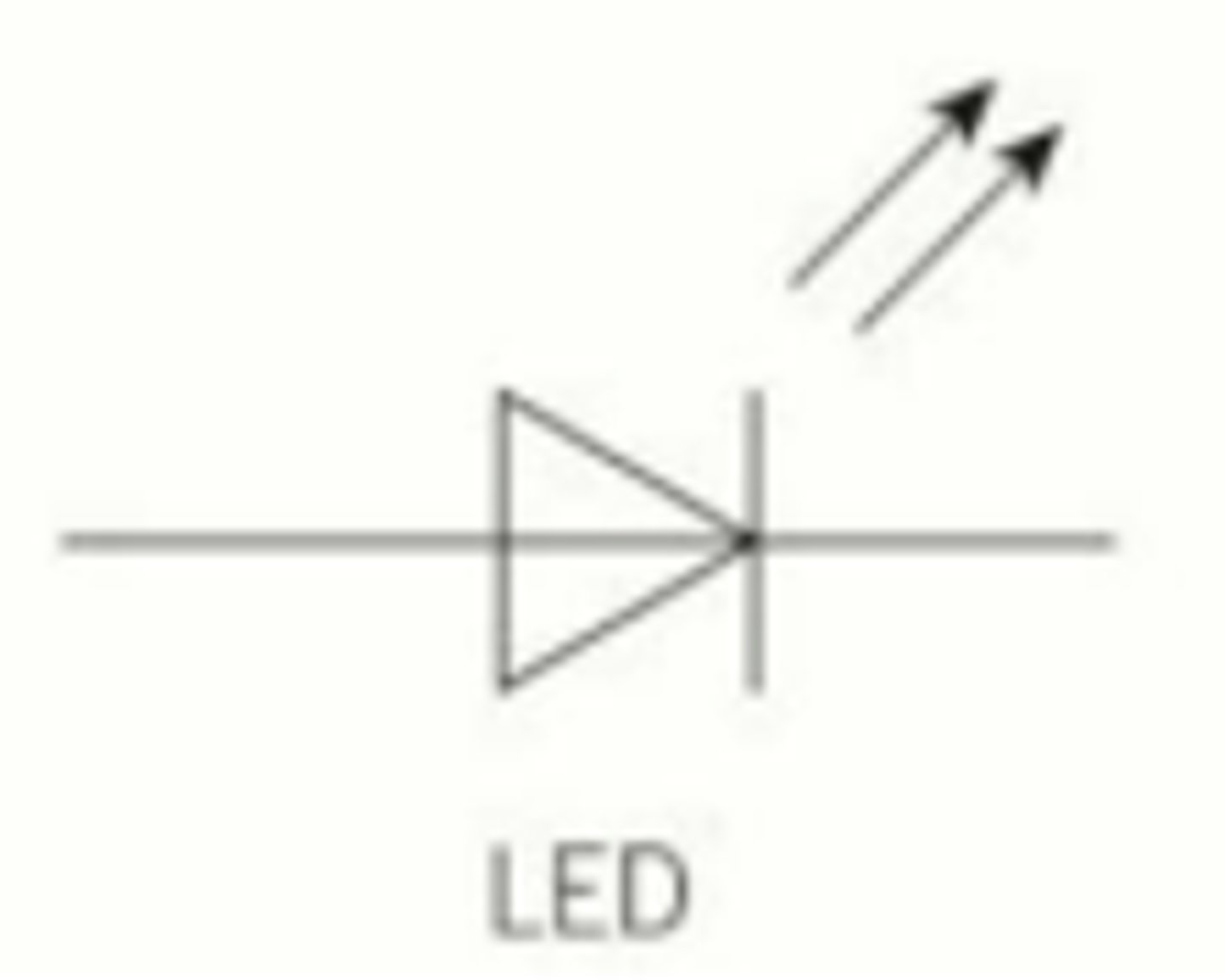
What is the symbol for a LDR (light dependent resistor)? (1)
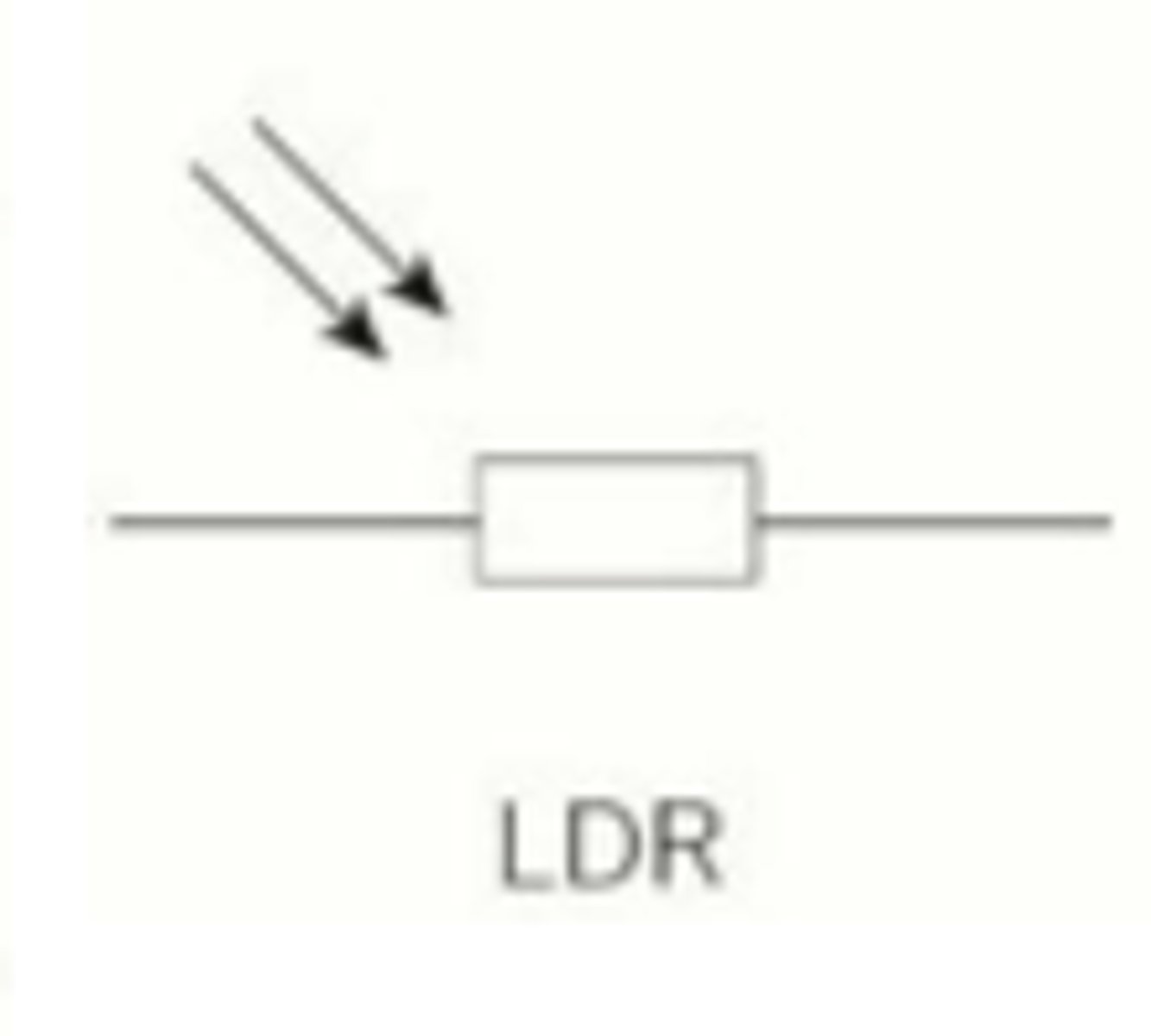
What is the symbol for a battery? (1)
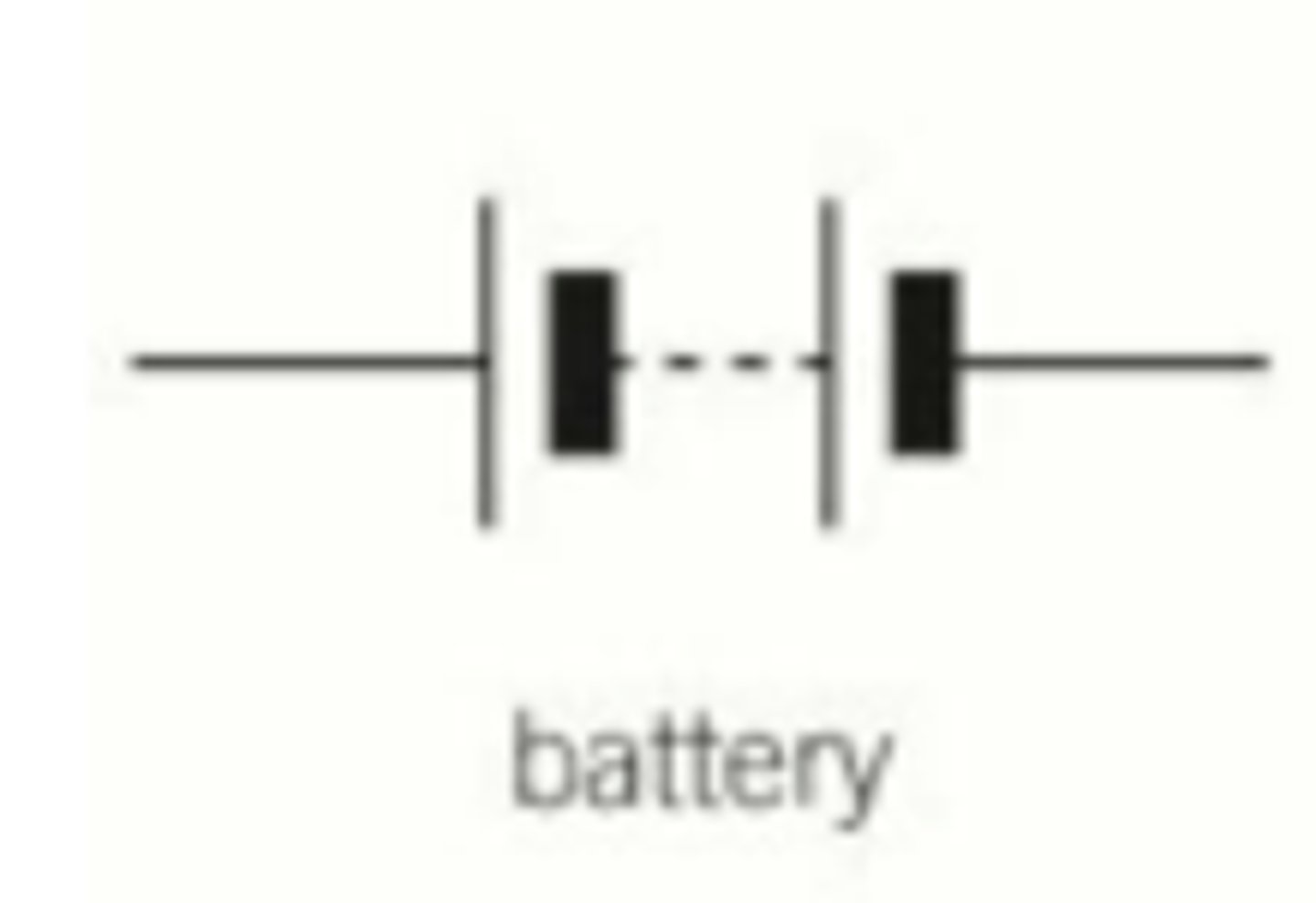
What is the symbol for a diode? (1)

What is the symbol for a lamp? (1)

What is the symbol for a fuse? (1)

What is the symbol for a capacitor? (1)

How should ammeters be connected in circuits? (1)
They should be connected in series with the component they are measuring the current of.
How should voltmeters be connected in circuits? (1)
They should be connected in parallel with the component they are measuring the voltage of.
How should wires be drawn in circuits? (1)
They should be straight lines with junctions at right angles to each other.
What is the definition of potential difference (pd)? (2)
- Potential difference (V) (also called voltage) is defined as the energy transferred from electrical energy to other forms of energy per unit charge.
- It measures the work done by charge carriers which lose energy when travelling through components.
What is the equation for potential difference? (1)
Potential difference (V) is given by: V = W / Q where W is the energy transferred (J) and Q is the charge (C).
1 volt is defined as 1 joule of energy transferred per coulomb of charge.
What is the unit and S.I. unit for potential difference? (1)
The unit is the volt (V) and the S.I. unit is m²kgs⁻³ A^-1
What is the electromotive force (emf)? (3)
- This is calculated in the same way as the potential difference and has the same units.
- It measures the work done to charge carriers as they pass a cell or any source of electrical energy and gain energy.
- It is defined as the energy transferred from chemical energy to electrical energy per unit charge.
What is the equation for the electromotive force (emf)? (1)
The emf (ϵ) is given by:
ϵ = W / Q
What is the difference between potential difference (pd) and electromotive force (emf)? (2)
- Potential difference is defined as the energy transferred from electrical energy to other forms of energy per unit charge.
- The emf is defined as the energy transferred from chemical energy to electrical energy per unit charge.
How is the electrical energy transferred to electrons? (2)
- If an electric circuit has a potential difference (V) and the work done is equal to W = VQ we can find the work done on the electron as Q = e (elementary charge) for an electron so W = eV.
- All this work will be transferred to the kinetic energy of the electron so this can be written as: eV = 1/2mv^2 where m is the mass of the electron and v is the speed of the electron.
What is the work-kinetic energy relation for electrons in a circuit? (1)
This is given by eV = 1/2mv^2 where m is the mass of the electron and v is the speed of the electron.
What is the work-kinetic energy relation for charged particles in a circuit? (1)
This is given by QV = 1/2mv^2
Where Q is the charge of the particle, m is the mass of the particle and v is the speed of the particle.
What is the definition of resistance? (2)
- This is how a material resists the flow of current.
- It is defined as the ratio between the potential difference and current across a component.
What is the equation for resistance? (1)
Resistance is calculated by R = V / I where V is the potential difference and I is the current.
What is the unit and S.I. unit for resistance? (2)
Resistance is measured in ohms (Ω) and the S.I. base unit is m²kgs⁻³ A^-2.
What is Ohm's law and where does it apply? (2)
- Ohm's law states that for a metallic conductor kept at a constant temperature, the current in the wire is directly proportional to the potential difference across it.
- This only applies for ohmic components and non-ohmic components will not have this directly proportional relationship.
What is an I-V graph? (1)
This is a graph with current on the y-axis and potential difference on the x-axis, it shows how a components resistance changes as current and pd increases.
What does the I-V graph for an ohmic conductor look like? (1)

What does the I-V graph for an ohmic conductor show us? (3)
- This is a straight line through the origin so the ohmic conductor follows Ohm's law and the current and potential difference are directly proportional to each other.
- As R = V/I the resistance remains constant.
- Wires in circuits can be modelled as ohmic conductors with a very low resistance.
What does the I-V graph for a filament lamp look like? (1)

What does the I-V graph for a filament lamp show us? (3)
- At low values of current the lamp acts as an ohmic conductor as the graph is a straight line through the origin.
- As the current increases the temperature increases causing metal ions to gain energy and vibrate with a greater amplitude and frequency causing more frequent collisions between electrons and metal ions and a reduction in current as the mean drift velocity is reduced.
- The lamp is a non-ohmic conductor.
How does a temperature increase cause resistance to increase? (3)
- As the temperature increases, the kinetic energy of the metal ions will increase causing them to vibrate with a greater amplitude and frequency.
- This will cause a higher rate of collisions between electrons and metal ions and the mean drift velocity will decrease.
- As I = Anev, a reduction in drift velocity means a reduction in current, as R = V/I the resistance will increase as current decreases.
What does the I-V graph for a diode and light-emitting diode (LED) look like? (1)

What does the I-V graph for a diode and light-emitting diode (LED) show us? (2)
- The semi-conductor material in the diode will only allow current to flow in one direction.
- As the diode reaches a threshold value for the potential difference, it will start to conduct electricity and the current rapidly increases as the resistance decreases.
What happens at the threshold value of potential difference for a diode? (2)
- At this p.d, the number density of charge carriers (n) in the diode increases causing a greater current due to the equation I = Anev
- As R = V/I a greater current means a smaller resistance.
What is a light-dependent resistor? (2)
- This is a non-ohmic conductor made from semi-conductor material.
- When the light intensity increases, the resistance decreases as the number density of charge carriers in the resistor increases.
What is meant by the resistivity of a material? (2)
- This is a physical property of any material.
- It acts as a constant to link the resistance of a material to its cross-sectional area and length.
What is the equation of resistivity? (1)
This is given by ρ = R A / L
Where R is the resistance (Ω) of the material, A is the cross-sectional area (m²) of the material and L is the length (m) of the material.
What is the unit and S.I. unit for resistivity? (2)
- Resistivity is measured in ohm-meters (Ωm)
- The S.I. base unit is m^3 kgs−3 A^-2.
How does the resistivity of metals change with temperature? (4)
- When the temperature increases the metal ions will vibrate with a greater frequency and amplitude as they gain kinetic energy.
- This will cause a higher rate of collisions between electrons and metal ions and the mean drift velocity will decrease.
- As I = Anev, a reduction in drift velocity means a reduction in current, as R = V/I the resistance will increase as current decreases.
- The resistivity if affected in the same way and will increase as resistance increases due to the equation linking the two and length and cross-sectional area remaining constant.
How does the resistivity of semi-conductors change with temperature? (3)
- For semi-conductors the number density of charge carriers (n) is increases with a rising temperature causing a greater current due to the equation I = Anev
- The resistance will therefore decrease as R = V/I
- The resistivity if affected in the same way and will decrease as resistance decreases due to the equation linking the two and length and cross-sectional area remaining constant.
What is a negative coefficient thermistor (NCT) resistor? (2)
- This is a non-ohmic conductor where as the temperature increases, the resistance decreases rapidly.
- It is used in temperature sensing circuits such as thermostats.
What is meant by electrical power? (1)
This is the rate of electrical energy transfer, measured in Watts (W).
What is the equation for power in terms of current and potential difference and how is it derived? (2)
- As the energy transferred is W = QV and P = W/t the power can be written as: P = QV / t
- Q/t is defined as the current so the equation for power is P = VI
What is the equation for power in terms of current and resistance? (2)
- As P = IV and R = V/I we can rewrite the potential difference to be V = IR
- The power is therefore: P = IR^2
What is the equation for power in terms of potential difference and resistance? (2)
- As P = IV and R = V / I we can rewrite the current to be I = V / R
- The power is therefore P = V^2/ R
How is the energy transferred in a circuit found? (2)
- As the power is the energy transferred per unit time, we can multiply the power by time to find the total energy transferred.
- This is given by W = Pt = IVt
What is the kilowatt-hour (kWh)? (1)
This is the amount of energy transferred by a device operating at 1 kilowatt (1kW) for 1 hour. It is a measure of energy.
How is the cost of energy calculated? (1)
The cost of energy is usually given per kilowatt-hour (kWh) so this is multiplied by the amount of kWh used to give the total cost of energy.